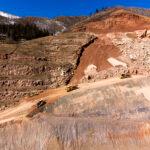
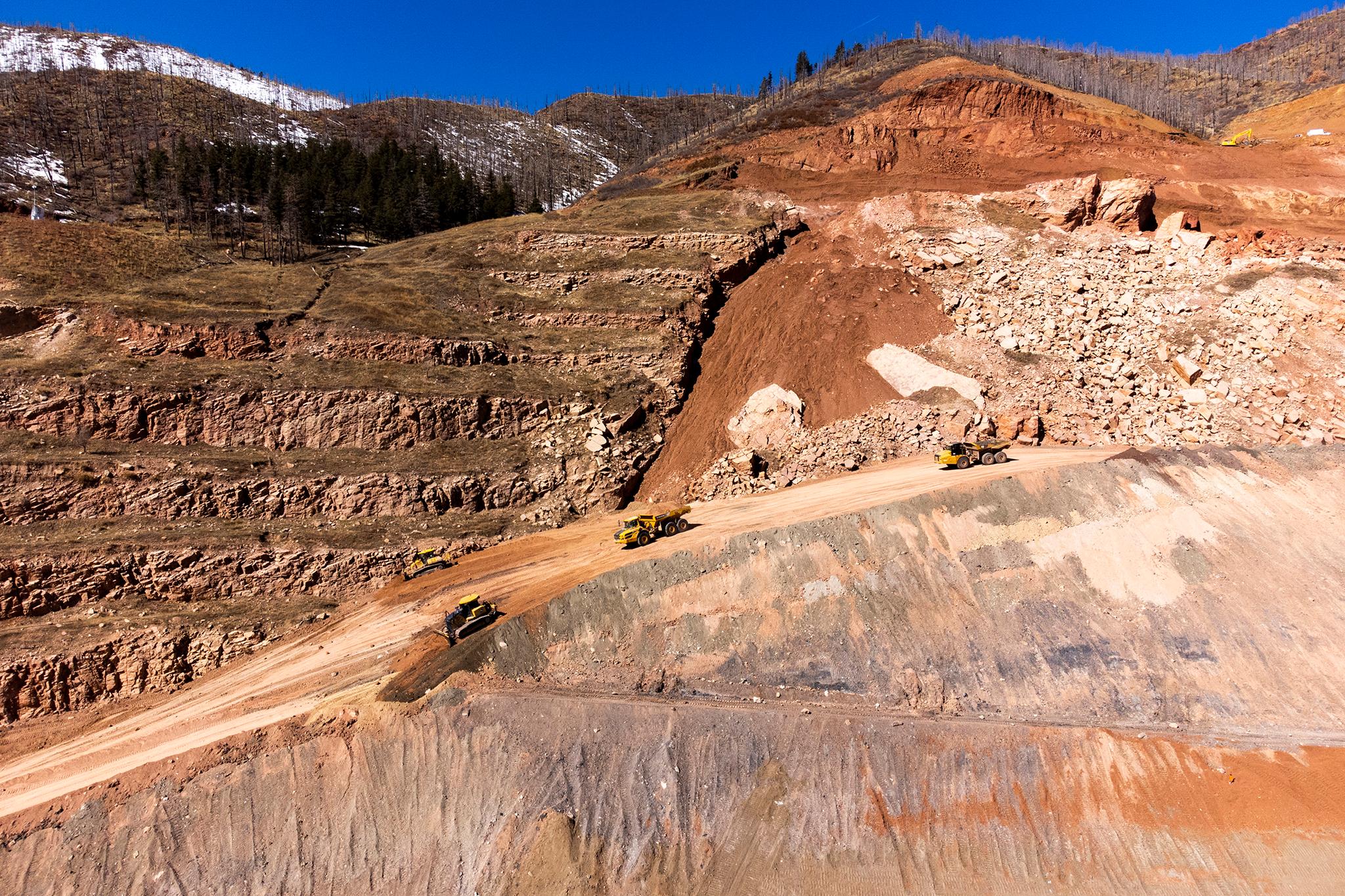
West of I-25, just south of the Air Force Academy, sits the Pikeview Quarry. It's one of the most visible mining scars in the Pikes Peak region.
Among other things, the mine was a source of limestone, an aggregate used to make concrete. According to the city of Colorado Springs and the company that owns the mine, around half of the limestone used in the concrete that built Colorado Springs came from Pikeview.

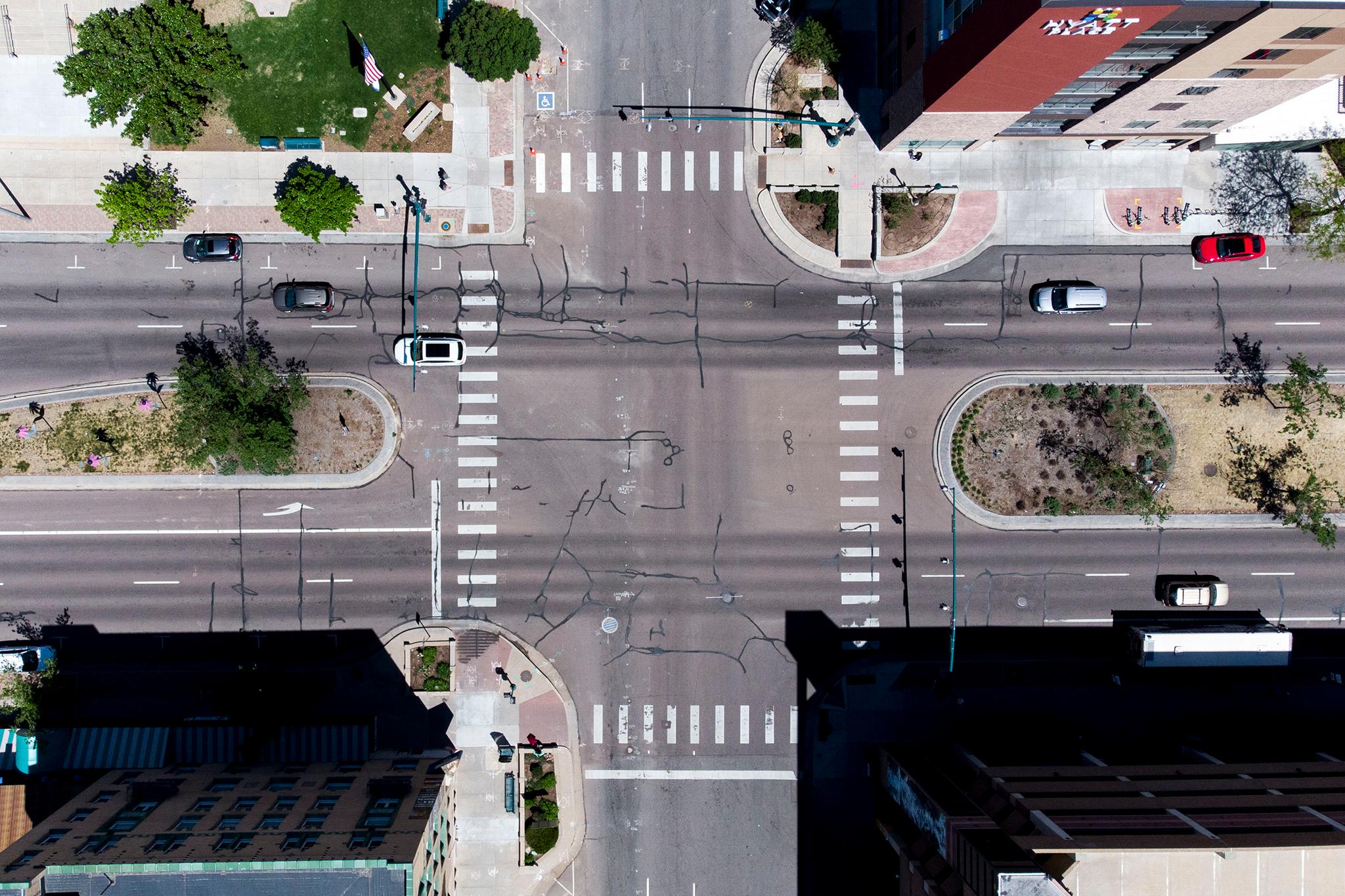
That includes the base of many city roads, the United States Air Force Academy campus, and the high-rise buildings in the Colorado Springs skyline.
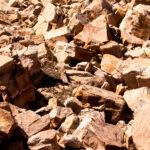
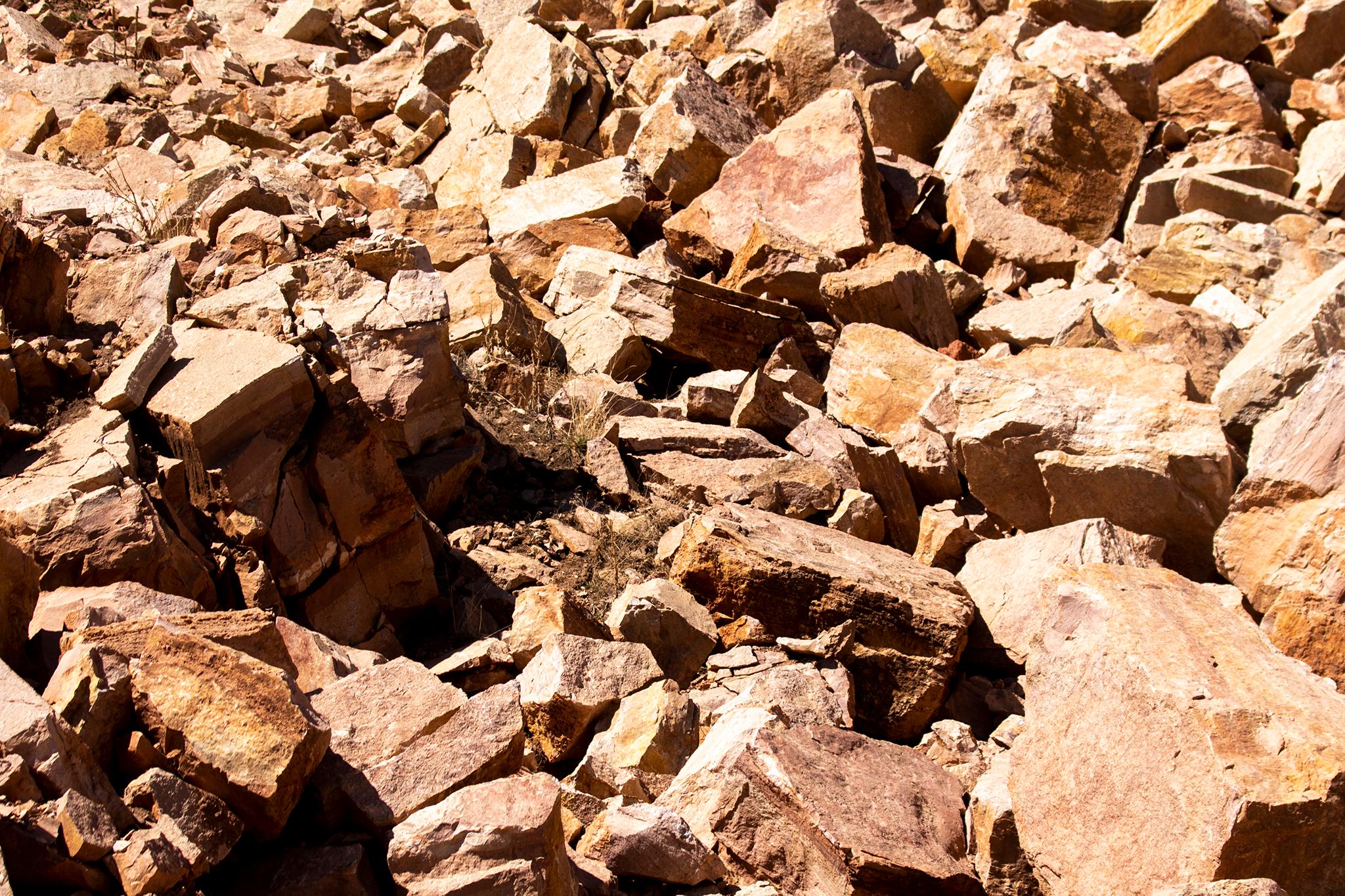
The Pikeview Quarry served an essential role in Colorado Springs' history. Its story is still being written
By Abigail Beckman and Jess Hazel


In 1871, the original Colorado Springs town plat was just over 5 square miles.
By 1950, the city had nearly doubled in size.
A timelapse of street development in Colorado Springs, 1865-2015
Yellow indicates areas where streets were constructed in the Pikes Peak Region over roughly 100 years.
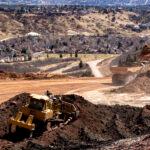
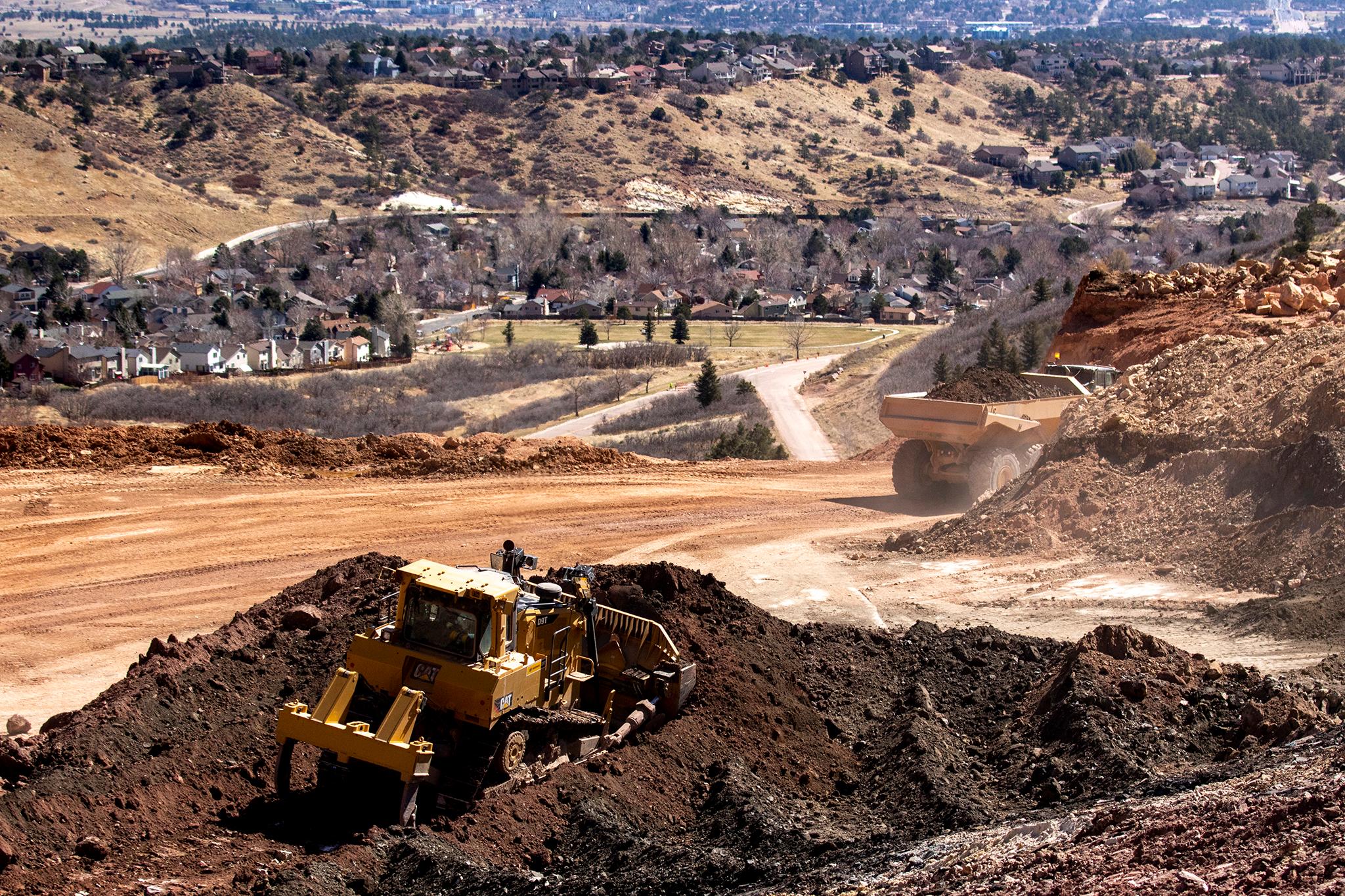
Today, what was once a resort-style escape is now 35 times its original size – and still growing.
At the time of its founding, the Pikeview Quarry was far outside city limits, but now the quarry sits high on a hillside with an expansive view of the sprawling cityscape below with houses and a park merely a stone's throw away.
"[If] you think about all of the curb and gutter and foundations in the sea of homes developed in the post World War II era, all of that is because there was nearby stone that you could quarry and use to build a city," said Matt Mayberry, a historian with the city. Having the quarry nearby saved the city money, he said, because it meant lower costs of transporting the materials.
"The bottom line is the quarry is there because that's where the material is," Mayberry said. "You don't want to move stone aggregate a lot. You want it as close as possible because it helps with your margins. Otherwise, the cost is just too prohibitive."
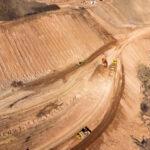
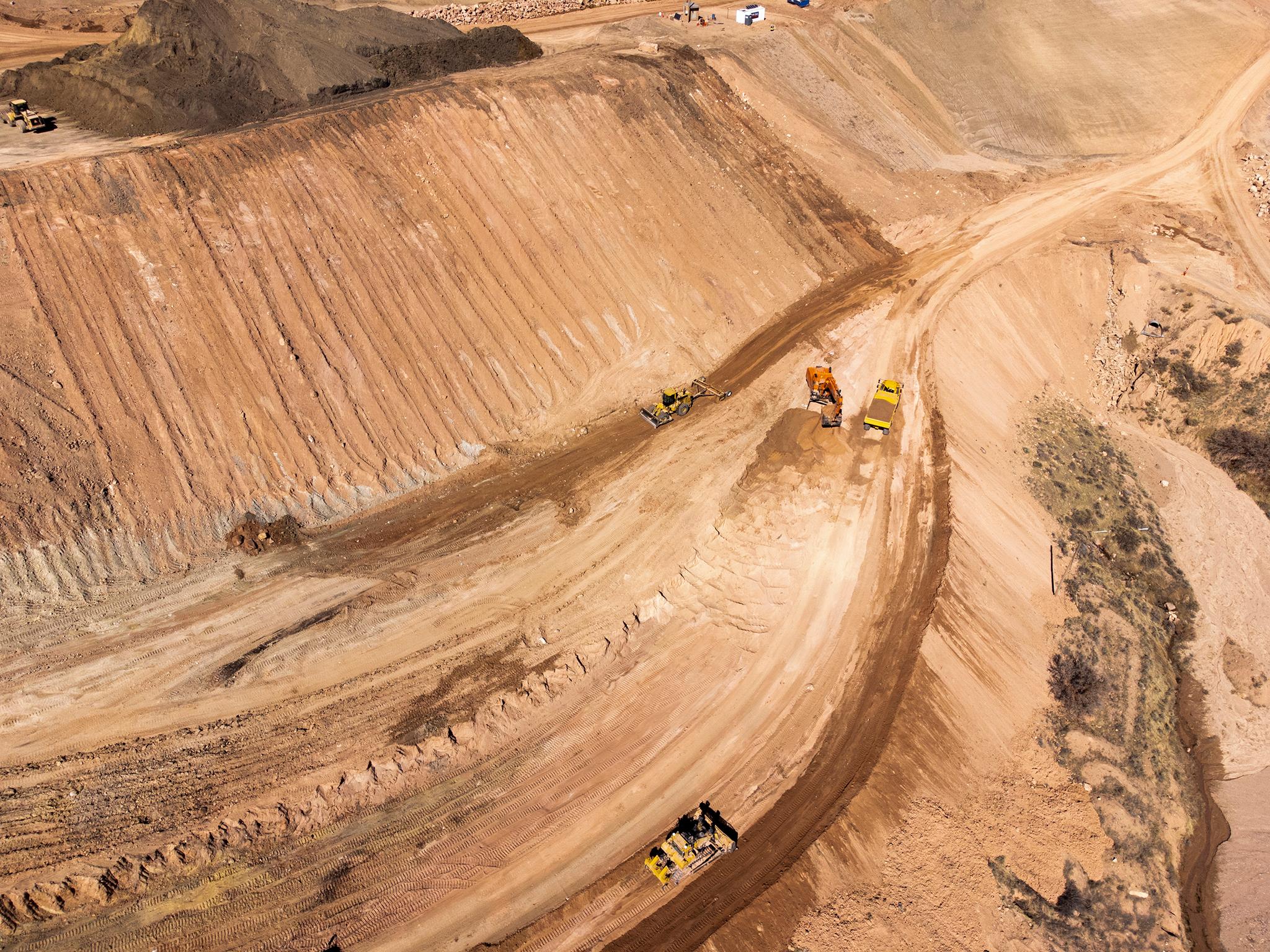
A scar in limbo
Giant trucks creep up a steep slope of red dirt. The work being done at Pikeview now is, perhaps, the opposite of what you might expect would happen at a mine.
Limestone isn't being pulled from the earth.
The workers aren't blasting into the hillside.
That all stopped in 2018 after the mining company decided the risk of continuing activity was too high, following several landslides. Since then, they've turned their attention to stabilizing the land and getting rid of the massive unnatural stairsteps and gashes left by more than 120 years of mining activity.
Jerry Schnabel works for Castle Aggregates. For more than two decades he's been, essentially, a one-man-band serving as the face of the Pikeview Quarry.

Castle Aggregates is a subsidiary of Riverbend Industries, the company that owns the quarry. Riverbend is operated by Ron Gidwitz, a prominent Illinois businessman and political activist.
Schnabel said by the time reclamation is done, the company will have planted 31,000 trees and shrubs.
"We'll have covered 125 acres of this disturbed area with topsoil, seeded it with grass," Schnabel said.
Castle Aggregates is one in a succession of operators that has worked the Pikeview Quarry since it first opened in 1903. For most of the current century, even as mining was taking place, the focus has been on planning for the future of the property.
"In the old days, mining kind of created its own problem with no reclamation," Schnabel said. "They would mine properties in the day and then just left all the tailings lay there. So mining without reclamation is wrong."

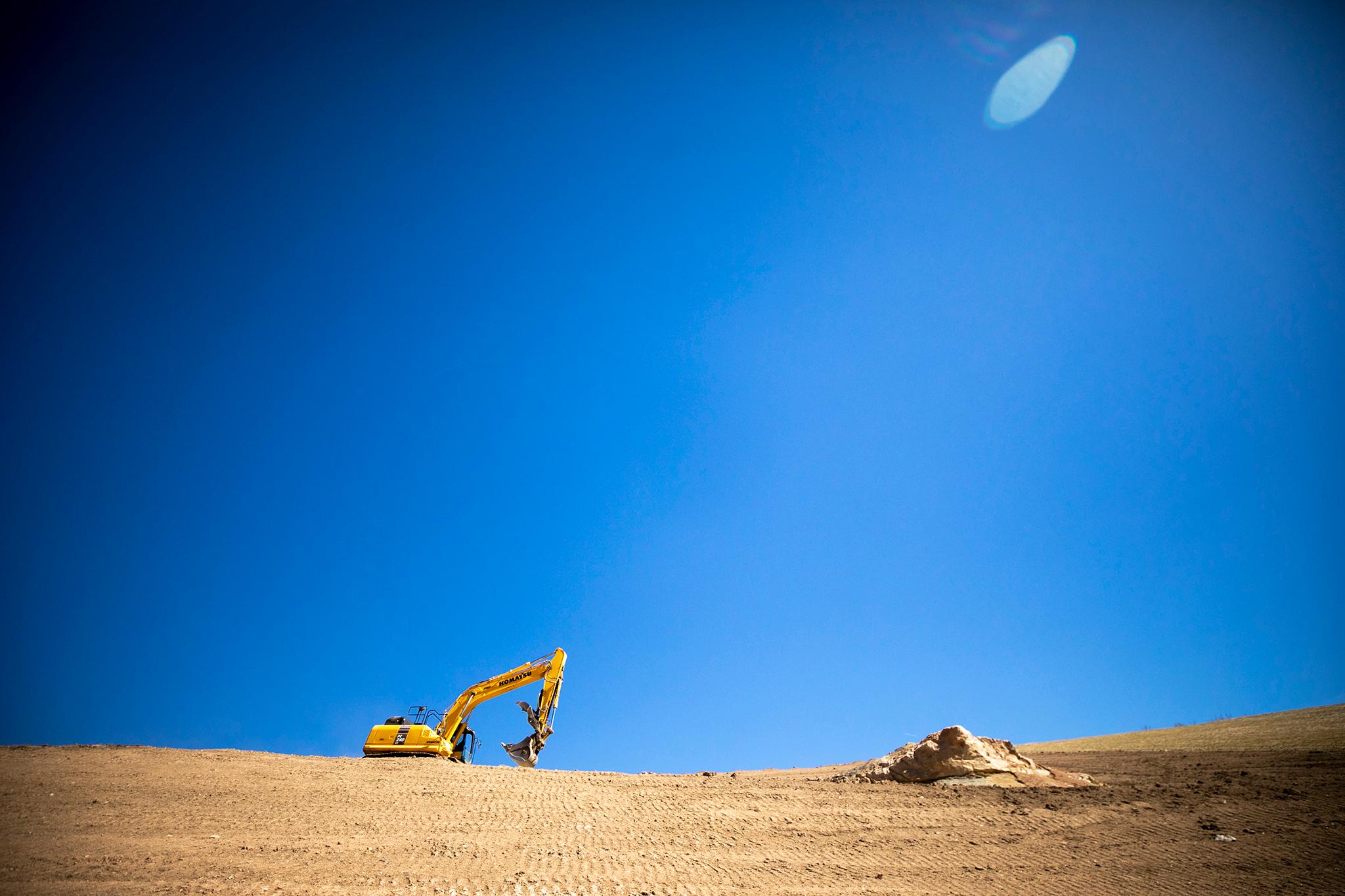
Reclamation on the company dime
Per state law, all mining operations in Colorado are required to file permit applications with the Colorado Division of Reclamation, Mining, and Safety that include detailed reclamation plans. To ensure companies follow through on the reclamation, the state holds a bond for the cost which is released when the reclamation is complete.
The first bond for Pikeview was $4.2 million. The current one is $13.4 million – triple the original amount. Damage to the natural environment and landslides are partly to blame.
According to archival reporting from the Colorado Springs Gazette in the 1970s, the quarry saw two landslides that decade.
Another pair of slides in 2008 and 2009 impacted the stability of the slope.

There's also been continual pushback – almost since the quarry's founding – from Colorado Springs residents. Mayberry said the opposition gained traction as the national environmental movement took shape in the 60s.
It was at that time that Colorado Springs became known as the "city with the scar," a term coined in 1966 by then Secretary of the Interior Stewart Udall.
"I think a scar is a very visceral term," Mayberry said. "It really brings to mind what some people think quarrying did to our community is that it left a scar behind."

But, even decades ago, some people championed the value of the quarry. In 1997, M.D. Whitney was the Managing Editor Emeritus of the then-named Gazette Telegraph newspaper. In a column titled "Those 'Scars' On the Mountain", Whitney admonished criticism of the mining scars in the Pikes Peak region.
"It would be extremely difficult to find even one resident of this area that has not used the material in one form or another," he wrote, referring to the limestone taken from Pikeview. "It is used as raw rock in driveways and parkways and is a prime source of material for the production of cement in all forms."
M.D. Whitney
Whitney goes on to list other uses for the rock - the base of playgrounds, as landscaping material for city projects, the bedding under gas and sewer lines.
"From this it is obvious that its use extends to all who live in the area," he wrote.
Many blame the continued presence of the Pikeview scar and others on a precedent-setting ruling from the Colorado Supreme Court in 1973 that effectively buried most efforts to prevent quarrying for solely aesthetic reasons. The case sets aside a lower court ruling on a suit against Castle Concrete – now Castle Aggregates.
The original case was filed by a group of Colorado Springs residents called the Springs Area Beautiful Association and the Sierra Club in relation to a separate quarry operated by Castle. They argued the Snyder Quarry in the Manitou Springs area was a "public and private nuisance." A judge ruled in their favor and the quarry was set to be shut down, citing possible impacts to the view of the Front Range from the eastern plains."
In reviewing the case, the Colorado Supreme Court ultimately ruled that "courts cannot be available to enjoin an activity solely because it causes some aesthetic discomfort or annoyance."
But "the scar" also means different things to different people, depending on which quarry they are most familiar with. In 1888, the Colorado Stone Company and the Snyder Stone and Lime Company both began quarry operations in Red Rock Canyon. Through various changes in ownership, quarrying continued at the site until sometime between 1909 and 1915.
A separate endeavor, Queen's Canyon Quarry just south of Pikeview, opened in the 1950s and ceased operations in 2001. Castle Concrete (now Castle Aggregates) completed reclamation of the site in 2004 and donated the land to the U.S. Forest Service. The land is now a habitat for bighorn sheep.
Mayberry said that in many ways, the reclamation of Queen's Canyon wrote the book on how such actions should be done.
"Imagine what quarrying does and the amount of effort that it takes to rebuild that ecosystem when it's just all exposed rock with very little topsoil," Mayberry said. "They were inventing the techniques that were used not just in other quarries here in Colorado Springs, but around the country."
In 1988, then-Colorado Gov. Roy Romer formed a State Commission of Mountain Scarring. Mayberry said Romer committed $75,000 toward reclamation of the Colorado Springs quarries. The money was to purchase trees and wildflower seeds, and other such things outside of the basic reclamation activities required by Colorado law.

Pikes Peak NewsFinder
Additional work toward the reclamation of Queens Canyon was spearheaded by Colorado Springs resident Wanda Reaves, now deceased. According to the Colorado Springs Pioneers Museum, Reaves served as project manager and executive director of the Colorado Mountain Reclamation Foundation (CMRF). From 1994 to 2010, she raised funds and recruited volunteers to assist in the reclamation work at the site.
Castle also operated the Black Canyon quarry located north of Manitou Springs. Work there began in 1874 when the mine was known as the Snyder quarry. Activity ceased in 2015 and reclamation of the site began in 2016.
The company also tried to open another quarry south of Colorado Springs in 2018 but the application was ultimately denied after two years of contentious debate. The Hitch Rack Ranch Quarry was steeply opposed by neighbors and environmental groups in the area.
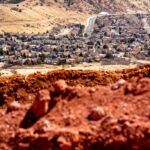
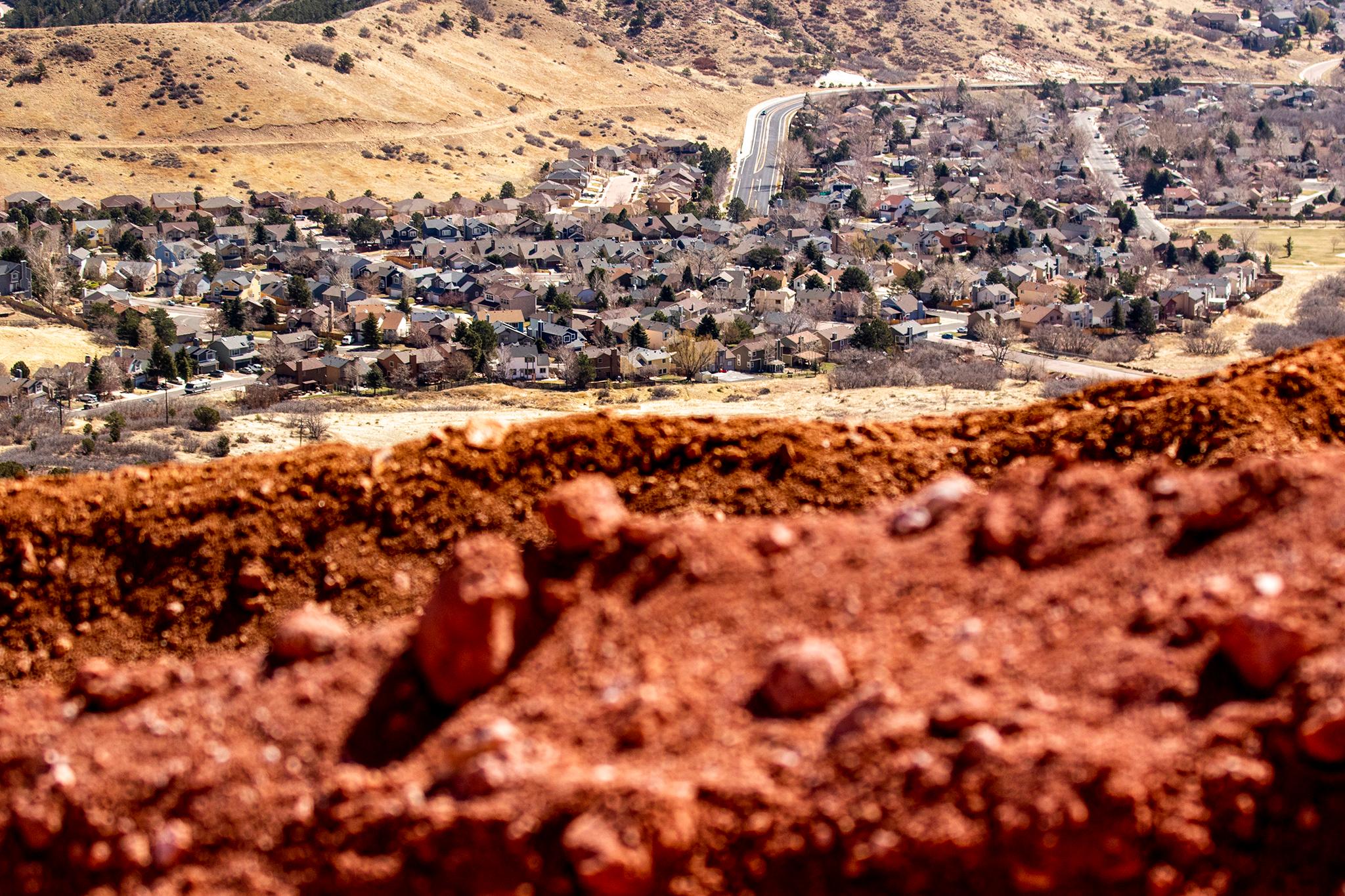
An unwritten future
Barry Noreen was an environmental writer for the Colorado Springs Gazette in the 1980s and 90s, covering the quarry and the discussion surrounding it extensively. Noreen later became a left-leaning columnist for the paper before retiring in 2013.

In all of his interviews with citizens and elected officials, Noreen said it all boils down to one thing.
"What it's really been about is they turned their beautiful, gorgeous foothills into a cost-benefit ratio and there you have it," Noreen said. "There's a lot of places that wouldn't have allowed this."
Before working for the Gazette, Noreen covered county government for a newspaper in Boulder. He said a rule there in the 1960s and 70s prohibited any building or water above a certain elevation. It's called the Blue Line Rule.
Noreen said Colorado Springs took a different approach.
"So at the same time, Colorado Springs was making these kinds of decisions, another city, not that far away was going, 'No, we value that mountain backdrop. Not only are we going to not dig it up, but we're also not going to have street lights going up into the foothills there,’” he said. “And that was considered a pretty radical thing to do back then.”
Noreen said he sees the scar as a literal and figurative symbol of what the city of Colorado Springs is all about.
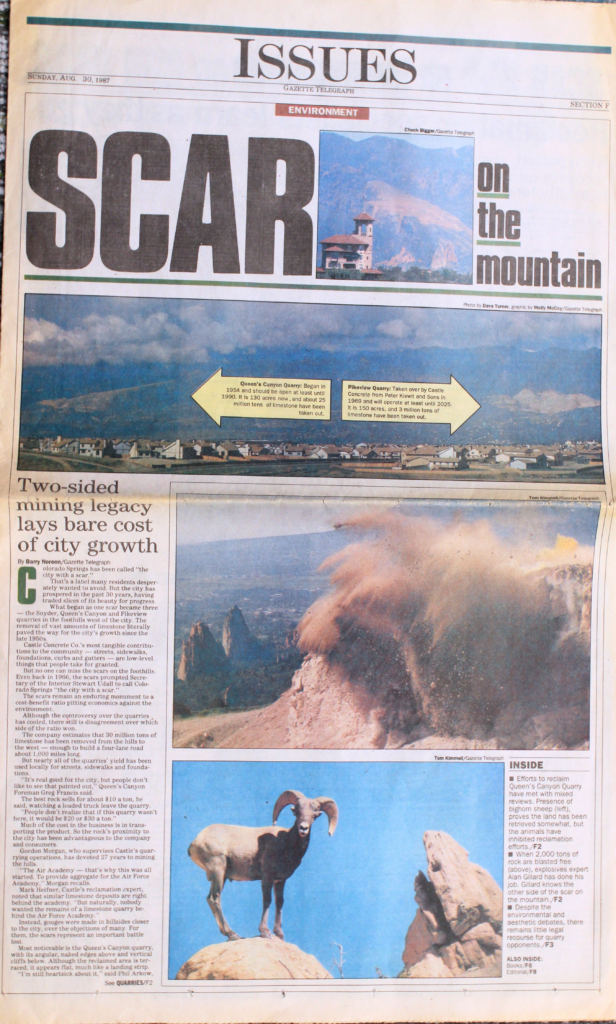
For David Dietemeyer, senior landscape architect for the city of Colorado Springs, the story of the quarry isn't over.
"The city of Colorado Springs is known for so much more than just a scar on the mountain. And I think that the reputation and the community in a sense knows that and respects that," Dietemeyer said.
He's optimistic about what the Pikeview Quarry could potentially be instead. The main idea on the table is turning the quarry into a mountain bike park, although that plan is still very much up in the air.
"This is that chance to really create a legacy to do the restoration of it and reclamation on a place that was once seen as an eyesore," he said.

Even if the bike park doesn't pan out, Castle Aggregates and Riverbend Industries plan to wrap up active reclamation by the end of this year. They'll then monitor the land to see how newly planted vegetation is fairing in hopes of turning it over to the city by 2026.
But until then, the scar remains as it has for generations, a reminder of the balance of interests between a quickly growing city and the value of an undisturbed natural landscape.
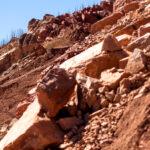
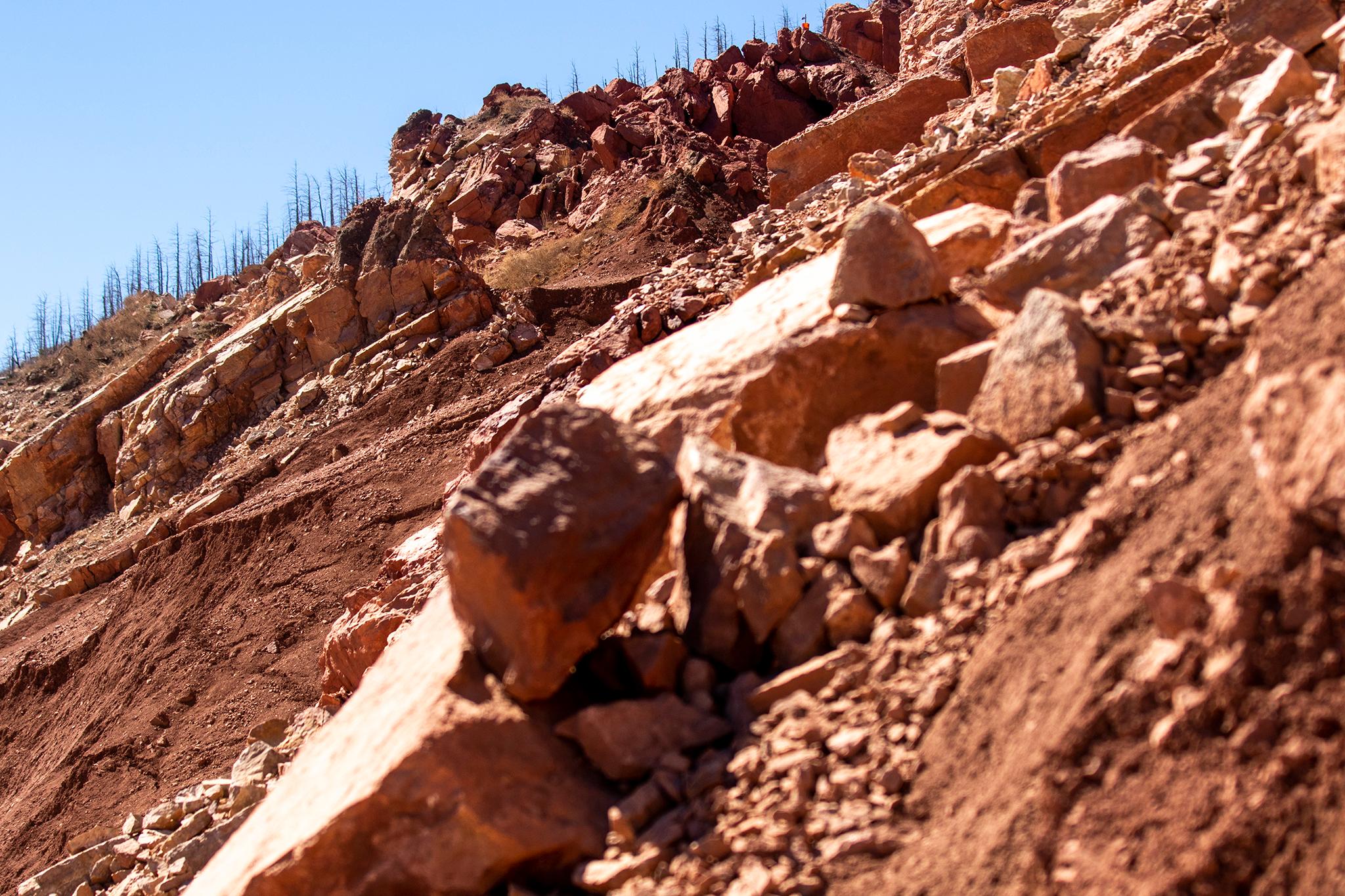
Story by Abigail Beckman and Jess Hazel
Edited by Andrea Chalfin
Photos by Kevin J. Beaty
Produced by Lauren Antonoff Hart